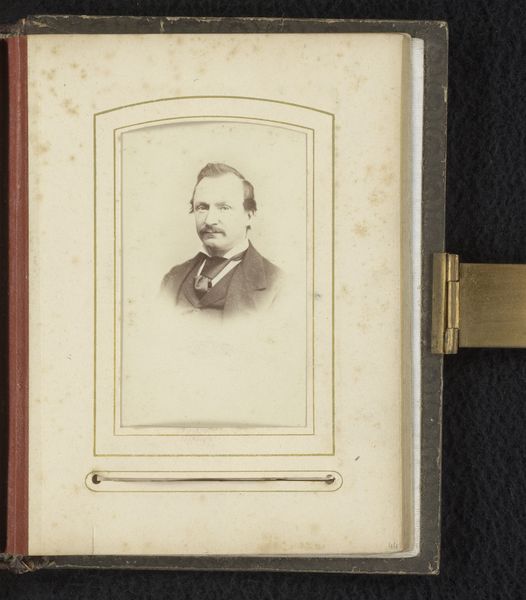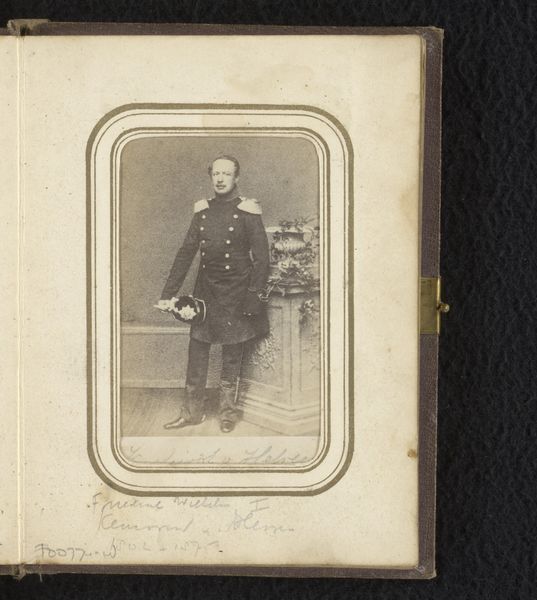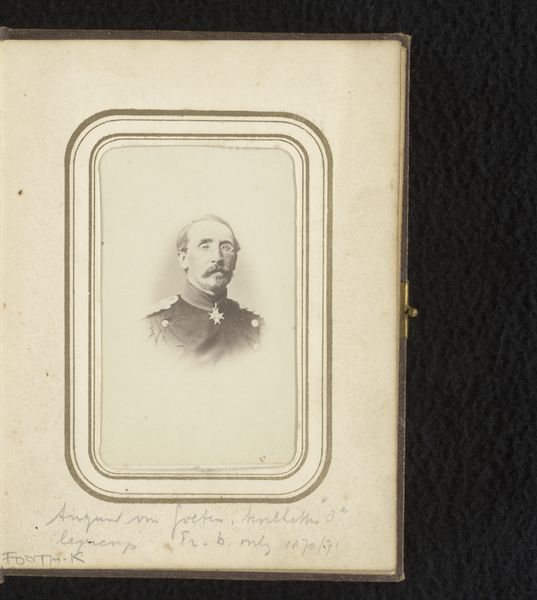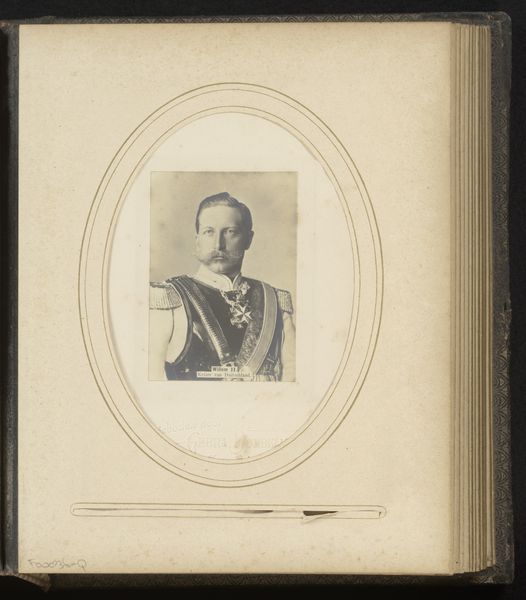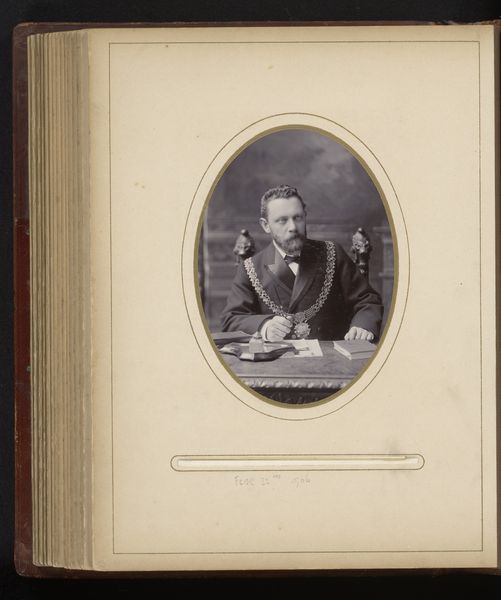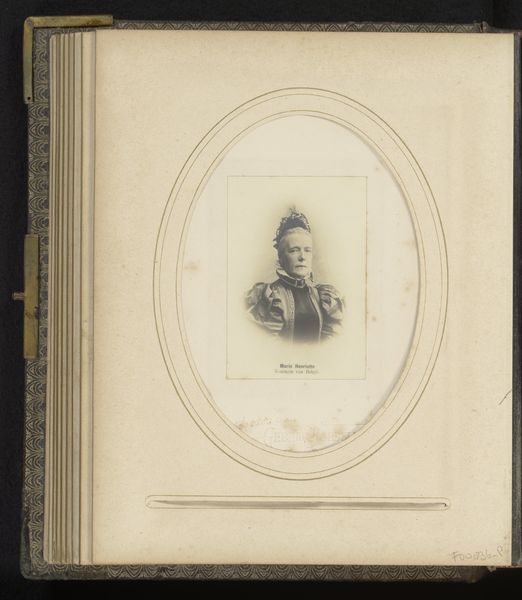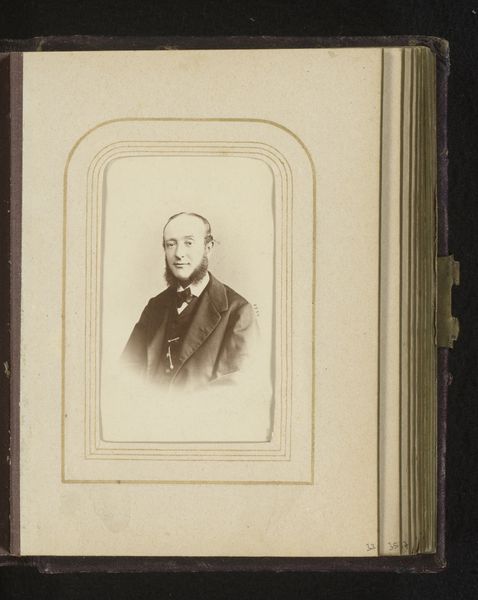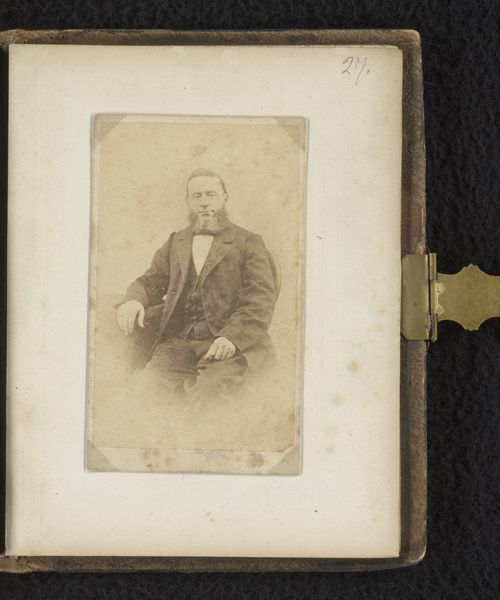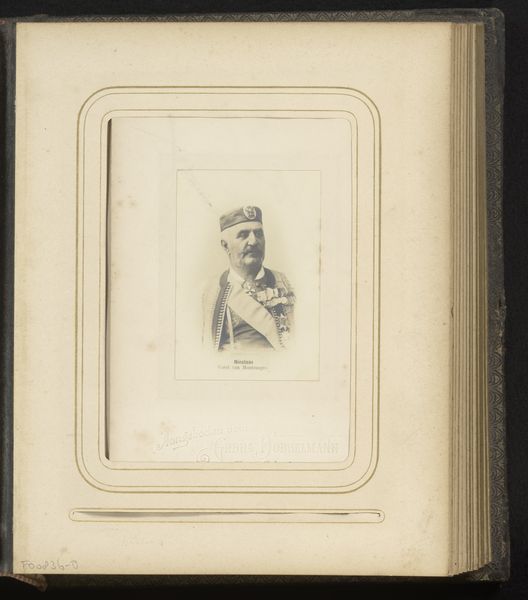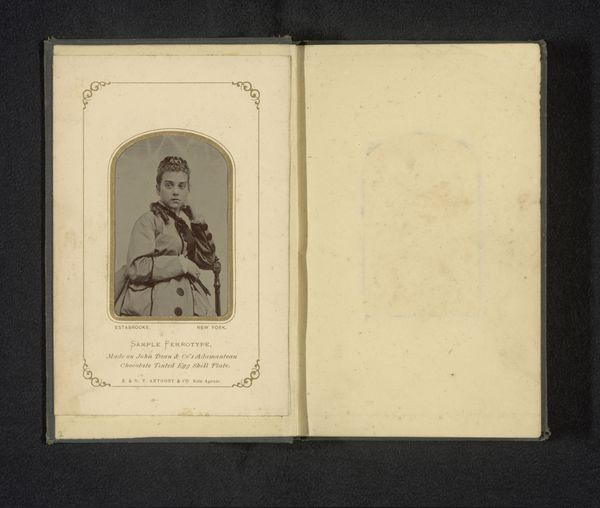
Dimensions: height 83 mm, width 52 mm
Copyright: Rijks Museum: Open Domain
Editor: Here we have a photograph, "Portret van koning George V van Hannover in uniform," or "Portrait of King George V of Hanover in Uniform," dated sometime between 1860 and 1878. The stiff formality is pretty palpable. What strikes you about it? Curator: It’s interesting to consider the material conditions that made this image possible. We’re seeing a specific formulation of photographic chemistry here, an interaction between light, silver, and paper—elements readily available and inexpensive thanks to globalized trade at the time. Think about how the rise of photography democratized portraiture. Did that shift power dynamics at all, do you think? Editor: It democratized access a little, perhaps, but even then, materials cost something, and the process wasn’t accessible to everyone, was it? Plus, being depicted in such finery probably upheld, more than challenged, that power dynamic. Curator: Exactly. The very act of representing King George V in this manner speaks to the materials available for image construction at the time, both physical and social. It seems he intended to project this idea of power—look at the military uniform. How does the uniform itself function as material culture, conveying status and authority through its very construction? Editor: It’s meticulously crafted and embellished with those frogging details. So the uniform’s labor becomes part of the image’s meaning. Also, looking closely, I notice some damage to the photograph, almost like staining or fading along the edges. Curator: The decay, ironically, is part of its material history. It’s not just an image, but an artifact aging, showing the passing of time. Editor: It is amazing to think that the chemicals have begun to deteriorate. I guess I was so focused on the sitter, but thinking about its materials gives me a whole new understanding.
Comments
No comments
Be the first to comment and join the conversation on the ultimate creative platform.

